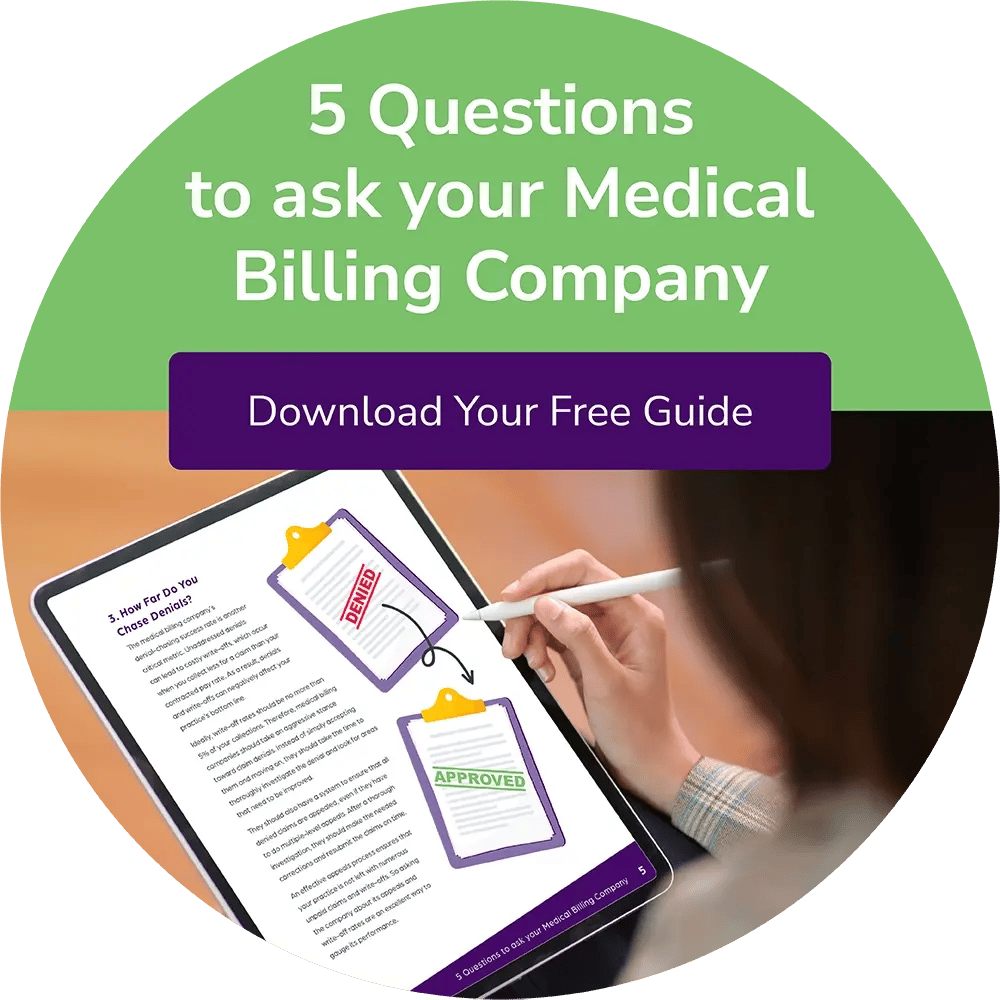Why Your E/M Claims Are Getting Downcoded — And How to Stop It
.png?width=596&name=PUREDI%20Blog%20Image_Your%20EM%20Claims%20Are%20Getting%20Downcoded%2c%20And%20How%20to%20Stop%20It%20(1).png)
The Silent Revenue Leak in Your Practice
You coded it correctly. The provider documented thoroughly. So why did the claim get paid as a 99213 instead of a 99215?
Welcome to the world of E/M downcoding—a frustrating and growing trend where payers reduce reimbursement by lowering the level of service on submitted claims. Sometimes it’s manual. Increasingly, it’s automatic. Either way, it impacts revenue and increases administrative burden.
Here’s what you need to know to protect your practice (and your paycheck).
What Is E/M Coding (and Why Payers Care)
Evaluation and Management (E/M) coding is the language providers use to tell payers: “Here’s what I did for this patient, and here’s how complex it was.”
Since 2021, E/M coding has been simplified, relying on either:
-
Medical Decision Making (MDM)
-
Total time spent on the day of the encounter
No more fishing for a complete ROS or 10-point physical exam to justify a high-level code. Now it’s about the complexity of the visit or the total time spent.
Why do payers care? Because higher E/M levels mean higher payments. When they see a spike in 99214s or 99215s, their claim algorithms start raising eyebrows.
That’s when downcoding begins.
What Is Downcoding—and How to Spot It
Downcoding is when a payer reduces the level of an E/M code and pays you less—sometimes without ever telling you they did it.
How it happens:
-
Software algorithms flag certain codes or diagnosis combinations
-
The claim is automatically paid at a lower level
-
No request for records, no heads-up, no negotiation
How to recognize it:
-
Remittance advice codes to watch for:
-
CO150: Payer deems the information doesn't support the level of service
-
CARC 186: Level of care change adjustment
-
M85: Subjected to review of physician E/M services
-
N610: Payment based on appropriate level of care
-
Commonly downcoded codes:
-
99214, 99215 (established patients)
-
99204, 99205 (new patients)
-
Claims with modifier 25
Sometimes payers don’t even change the code—they just pay less. You’ll need to compare expected vs. actual payment to catch it.
Why This Hurts Your Bottom Line
E/M downcoding isn’t a one-time headache—it’s a chronic condition with side effects:
-
Revenue loss: High-complexity care gets low-complexity payment
-
Delayed cash flow: Time spent appealing claims means longer AR cycles
-
Compliance risk: Misalignment between documentation and coding can trigger audits
-
Staff burnout: Billers spend more time chasing down denials than doing strategic work
Let’s be real: If you’re seeing even a few downcoded visits per week, it adds up fast. And if your practice doesn’t notice it—payers will keep doing it.
How to Prevent Downcoding
The best offense is a rock-solid defense—aka documentation that makes payers think twice.
Even the most experienced biller can't stop a claim from being downcoded after it’s submitted. That’s why your best shot at avoiding the revenue hit is making sure every claim is coded and documented like it’s going to court.
Here’s how to do it right:
-
Anchor Your Coding in MDM (Medical Decision Making) Since 2021, E/M codes are determined by the complexity of the visit—not how many paragraphs you write in the note. Focus on these three areas of MDM:
-
Problems addressed: How many conditions were evaluated? Were they chronic, acute, worsening?
-
Data reviewed: Did the provider order labs, review imaging, or coordinate care with specialists?
-
Risk: Did they make decisions with significant impact—like starting steroids, considering hospitalization, or dealing with high-risk meds?
If the documentation clearly shows moderate or high complexity in two of those areas, you’ve got grounds for a higher-level code.
-
Or Use Total Time—But Be Precise If time-based coding is used instead of MDM, note the total minutes the provider spent on the date of service, and be sure to include what they did with that time:
-
Reviewing records
-
Counseling the patient
-
Ordering and interpreting tests
-
Coordinating care
Just don’t count time that doesn’t count—like travel, teaching, or services billed separately. Payers love vague time entries. Don’t give them the chance to downcode.
-
Get Providers on Board Billers can’t document what providers don’t write down. Share trends with them. Show examples of downcoded visits. Remind them that “follow-up visit, stable” isn’t gonna justify a 99215—even if it should.
Use tools like templates, flags in the EHR, or even a quick cheat sheet to make proper MDM documentation easier for them.
-
Know the Codes (and the Pitfalls) High-level codes (99214, 99215) are the most frequently downcoded. Claims with modifier 25 also get extra scrutiny. Be on alert when you use them, and make sure supporting documentation is airtight.
What To Do When You’re Downcoded
Downcoding happens. The good news? You can fight it—and win.
Here’s what to do:
Appeal the claim
-
Reference the original claim number and CPT code
-
Include remittance advice and adjustment codes
-
Attach the provider’s clinical documentation
-
Cite the 2021 AMA/CMS E/M guidelines
-
Clearly explain why the billed code was correct
Use a sample appeal letter The AMA provides templates you can edit. Keep one saved and ready to roll.
Know if you’re on a prepayment review list If all your claims are getting dinged, you might be flagged. Contact the payer’s provider rep and ask how to appeal your inclusion. You may need to submit documentation for multiple claims to prove proper coding patterns.
What the AMA Says (and Why It Matters)
The AMA has made their position clear:
-
No blanket downcoding programs
-
Physicians must be notified before inclusion in any algorithmic downcoding process
-
Medical records should be reviewed before reducing payment—not after
-
Adjusted payments should come with transparent remittance notes and a path to appeal
If your payer isn’t following these standards, you’re well within your rights to push back—and reference AMA policy when you do.
Final Thoughts: Don’t Let Payers Rewrite Your Codes
This isn’t just a billing issue. It’s a revenue issue. A compliance issue. A fairness issue.
If your practice provides high-level care, you deserve to be paid accordingly. That means coding accurately, documenting thoroughly, and appealing strategically.
Want more resources on compliant billing workflows and efficient documentation strategies? PUREDI is built by billers who get it. Schedule a call today
Want to go deeper?
Get Awesome Content Delivered Straight to Your Inbox!
Posts by topic
- RCM
- Medical Billing Software
- Outsource Your Medical Billing
- Compliance
- Physician Billing Services
- Denial Management
- AI
- Data Analytics
- EHR
- ERA
- reporting
- Automation
- Business
- Claim Scrubbing
- Coding
- Community
- Events
- LTPAC
- Medical Billing Companies
- Medicare
- Press Release
- Revenue Cycle Management
- business development
- clearinghouse See All See Less





